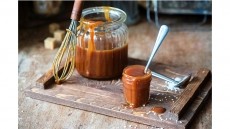Dispersed raw material sources cushion CNI gum arabic supplies
French hydrocolloid producer Colloides Naturels International (CNI)
assure supplies for gum arabic amid global shortfalls in stock,
writes Lindsey Partos.
Sourced from the acacia tree, gum arabic is a complex mixture of saccharides and glycoproteins, used as an emulsifier, texturiser and film-former, in the food and beverage industry to stabilise flavours and essential oils in soft drinks, gums and confectionery formulations.
But with nearly 70 per cent of the inventories coming out of war-torn Sudan in Africa, compacted by a drawdown of stocks, prices have rocketed in recent months moving from €2 a kilo about a year ago to €5 in today's market.
Hydrocolloid firms operating in this tightly priced climate face a raft of challenges: to ensure they can procure supplies; to soften as much as possible the impact of price rises on their customers; and crucially, to keep their clients loyal to their order books.
Olivier Houalla, CNI's sales director says the firm anticipated the gum arabic price leap in July 2003, in time to minimise the impact on customers.
"Protecting the inventories and booking contracts to protect our customers were the first steps we made after identifying the potential shift in prices for gum arabic," Houalla told FoodNavigator.com.
"We're still delivering on those 2003 (€3 a kilo) prices to contracts fixed during that period," he added.
Any new contracts negotiated by the firm are in step with current market prices.
Against the backdrop of depressed stocks and rising costs for the ingredient, food makers are obliged to look for alternatives to gum arabic in a bid to beat off squeezed margins and guarantee supply flow.
But in a bid to protect its 50 per cent share of the refined gum market, CNI claims its latest acacia gum emulsifier can ease price pressures because less is used in the formulation recipe.
"Our Eficacia product for flavour emulsions can be used in doses up to five times less than the typical levels of required gum," says the CNI sales director, suggesting savings gained for the food firms translate to gum costs of about €2 a kilo.
But a raft of speciality starches now on the market are competing with the top price hydrocolloids, such as gum arabic, acting as cheaper alternatives in food formulations.
"We can compete with the starches," states Houalla. "Despite the high price for gums we can effectively compete in the area of functionality and price" he affirms.
Minimising the risk of poor inventories, CNI sources its gum arabic supplies from over 12 countries worldwide with 30 to 40 per cent of the gum coming from Sudan.












